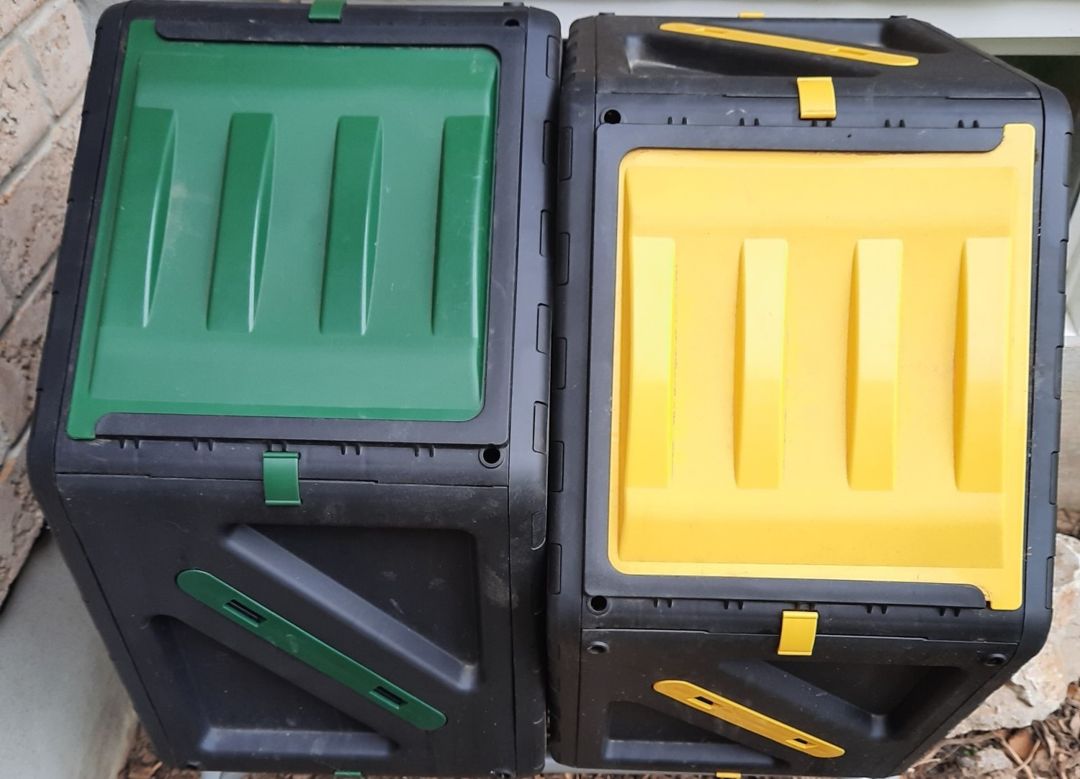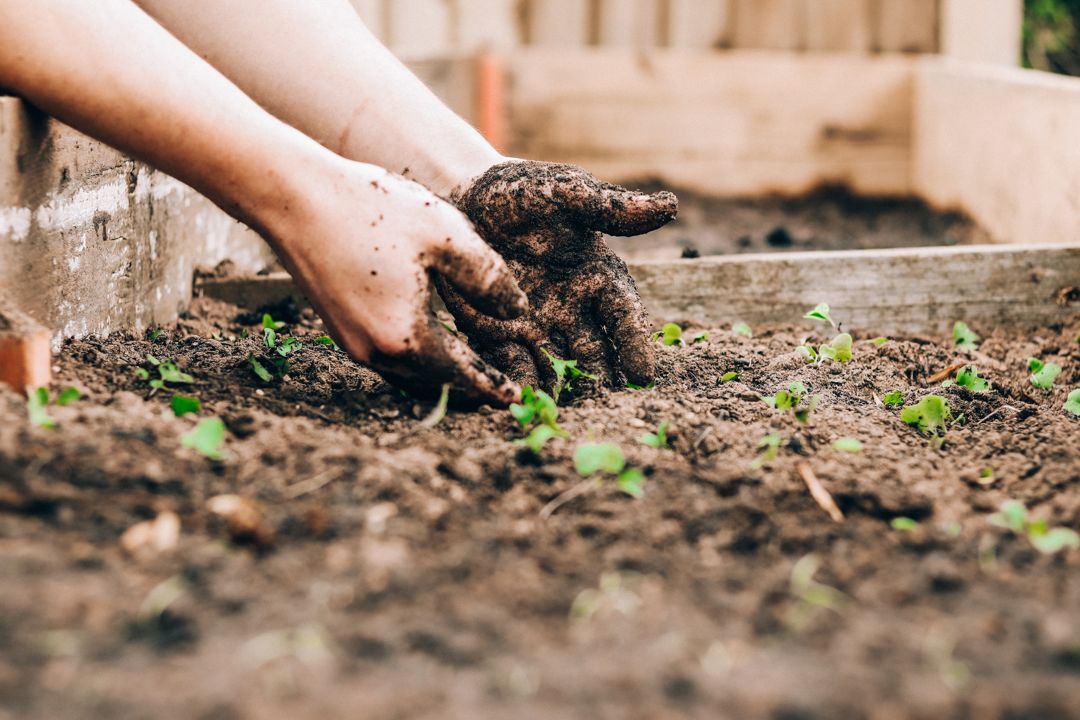Compost is about the best (and cheapest) way to improve the health of your garden soil. It improves soil structure and adds nutrients and microbes that are vital for plant growth. Making your own compost is a great way to transform scraps into garden gold!
Why Use Compost?
Compost benefits your garden soil in many ways:
- It adds organic matter (humus) that improves the soil structure. Sandy soils tend to drain water too quickly and leach nutrients and clay can become water-logged. Compost helps the soil hold onto the optimal amount of moisture for plants.
- It contains key nutrients that plants need to grow. Fully broken-down compost does not have high concentrations of nutrients, but the nutrients it does contain are released gradually so your plants can uptake them over time. Compost can also be a good source of trace nutrients that your plants need.
- It provides food for beneficial organisms, such as earthworms, that work to improve the health of your soil and it also contains beneficial bacteria and fungi that help your plants to uptake water and nutrients.
- Compost also makes a great mulch!
How To Compost

Composting can be as easy as throwing organic materials into a pile and waiting for them to break down. Passive composting, also known as ‘cold composting’ does work, but it can take a very long time to turn raw materials into usable compost.
With ‘hot composting’ on the other hand, a well-managed compost pile will reach temperatures between 130°F and 150°F (~55°C to 65°C) as the decomposition process generates heat. Materials break down more quickly, and any weed seeds and disease-causing organisms are killed off in the heat.
To get your compost to heat up, there are a few principles to follow. The first is the ratio of ‘brown’ carbon-rich materials to ‘green’ nitrogen-rich materials. Brown and green materials should be layered or mixed into the pile at a roughly 3:1 (brown:green) ratio. With too much brown material decomposition can slow down and with too much green material you can end up with a sludgy, stinky mess. If you see this starting to happen, add more of the type of material that is lacking. New material can be added to the pile in small quantities, but ideally the pile is built to full size - generally 4 feet x 4 feet x 4 feet (~1m x 1m x 1m) minimum - and then allowed to break down.
Shred or cut up the materials you put in the compost pile to help speed up decomposition. Whole woody plant stems will take forever to break down, but if cut up they can decompose in no-time.
Compost needs to be kept moist for decomposition to occur. Ideally rain will provide enough moisture for your compost pile, but you may need to water it during dry spells. Don’t soak your compost pile though, as this can turn the process from ‘aerobic’ (with oxygen) ‘anaerobic’ (without oxygen) which can also lead to a sludgy, stinky mess.
Lastly, compost needs to be turned regularly - that is the outer edges should be mixed into the center- to introduce oxygen and ensure all the materials get heated up.
Be aware that decomposition slows down dramatically in cold weather. Some decomposition will take place so long as the pile isn’t totally frozen, but it will not be as quick as when the weather is warmer.
When it comes to compost heap containment, there are a number of options available. An uncontained pile that is properly managed can still get ‘hot’ although it can be unsightly. A wooden or chicken wire enclosure can help contain the pile but be sure that there is easy access to turn the pile. Many gardeners use a three-bin system, where compost piles are moved from one bin to the next as they break down. There are also compost tumblers that take the work out of turning the pile, however they can be pricey and may not generate compost any faster than a properly maintained bin.

If you are interested in composting indoors, check out bokashi composting (using ‘bokashi bran’ - bacteria and yeasts) or vermicomposting (using worms). They are both great options to be able to compost year-round.
What Materials Can be Composted?
Nitrogen-rich (green) materials include: fruit and vegetable scraps, tea leaves and coffee grounds, plant trimmings, herbivore animal manures, and grass clippings.
Carbon-rich (brown) materials include: dry shredded leaves, small twigs and wood chips, and shredded, uncoated cardboard.
Some gardeners prefer to avoid adding diseased plant parts and weeds, but these can be used so long as the compost heats up.
Items such as eggshells, nutshells, fruit pits and cores are fine additions to the compost pile but can take a long time to break down. Do not include them in high ratios and crush them first if possible.
Some items that should not be added to a home compost pile are:
- Meats, fish, dairy, fats, and bones - these can take a very long time to break down, and can smell and attract animals.
- Human or carnivorous animal feces (including dogs and cats) - these can cause disease.
- Wood and plants that have been treated with herbicides, pesticides and other toxic chemicals.
Make sure your compost is fully-broken down before using it! The odd intact nutshell won’t hurt, but if you add unfinished compost into your soil in high enough quantities it may kill your plants. Finished compost should be dark brown, smell earthy, and should not have many visible uncomposted materials.
Add compost to your garden and as time goes on you will see your soil, and your plants, spring to life!
